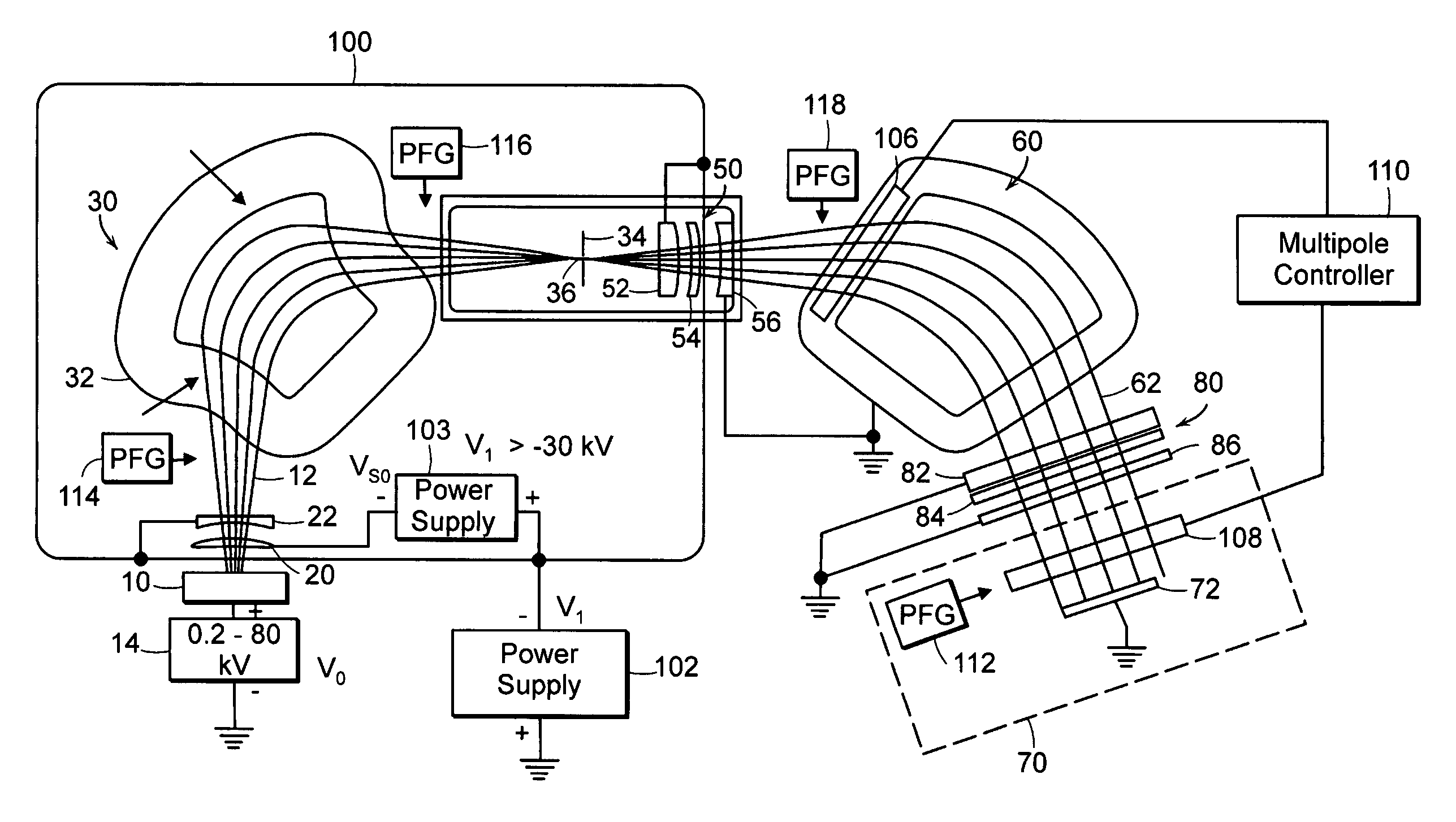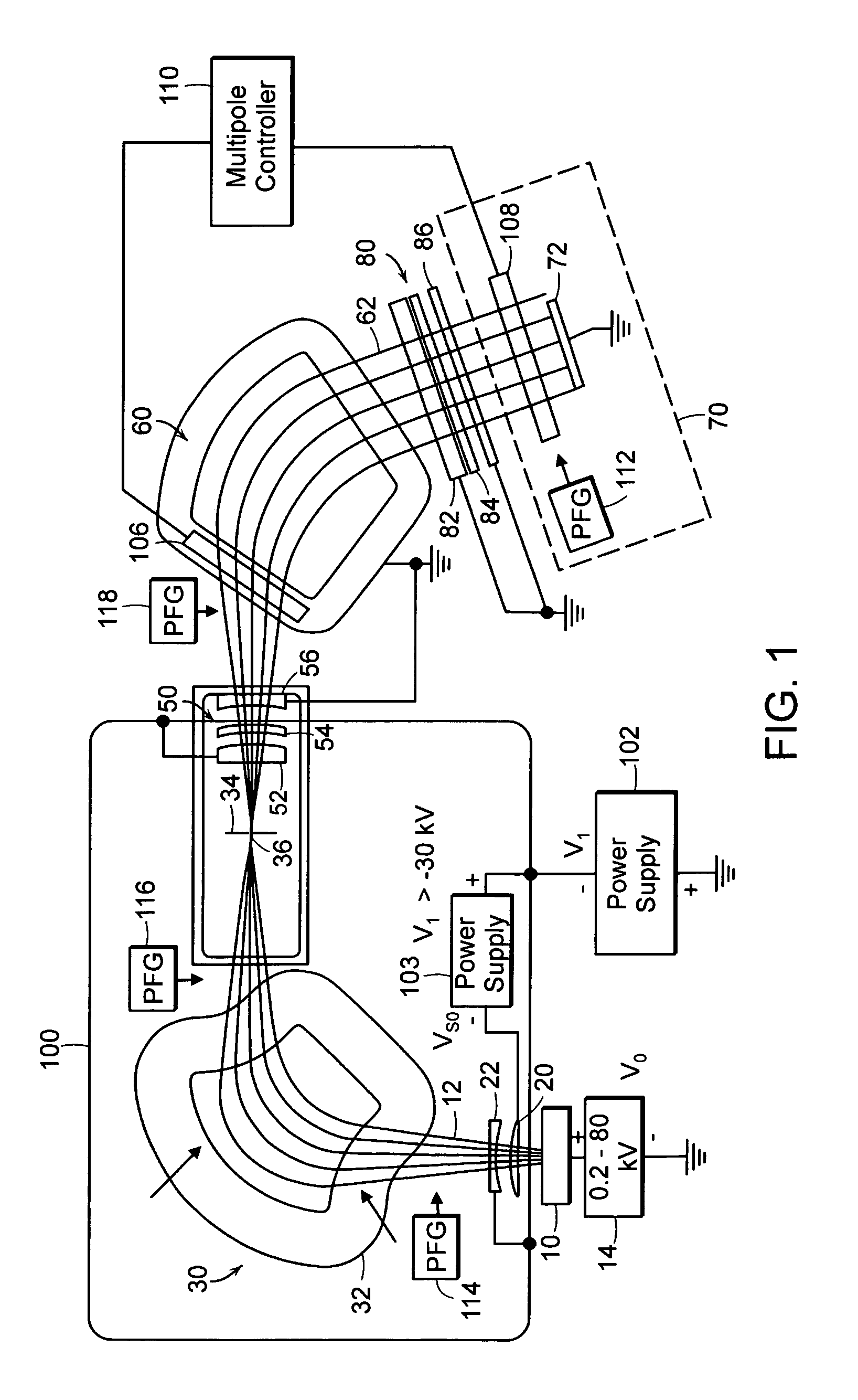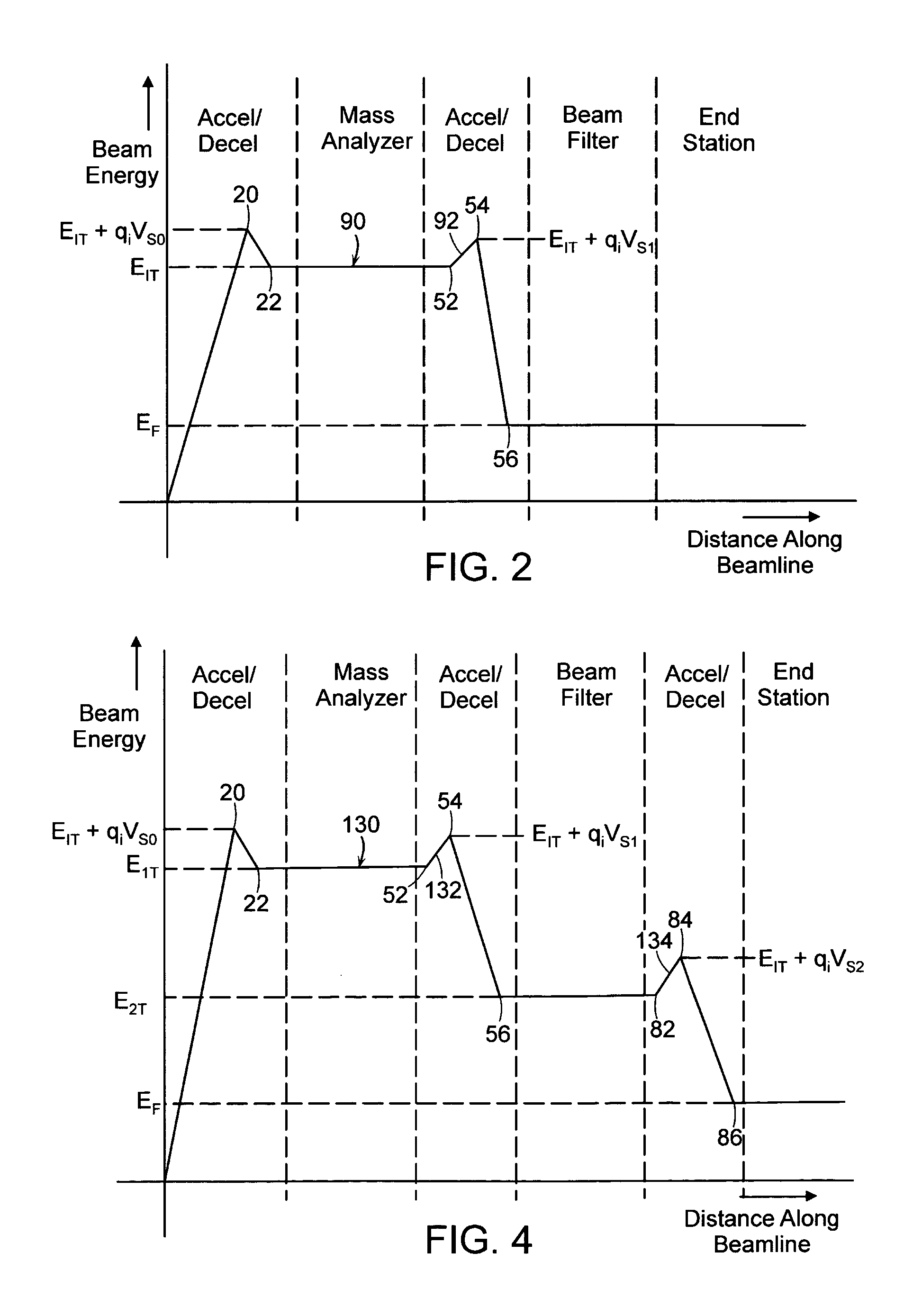Ion implanter having two-stage deceleration beamline
- Summary
- Abstract
- Description
- Claims
- Application Information
AI Technical Summary
Benefits of technology
Problems solved by technology
Method used
Image
Examples
Embodiment Construction
[0032]A block diagram of an ion implanter in accordance with an embodiment of the invention is shown in FIG. 1. An ion source 10 generates ions and supplies an ion beam 12. As known in the art, ion source 10 may include an ion chamber and a gas box containing a gas to be ionized. The gas is supplied to the ion chamber where it is ionized. The ions thus formed are extracted from the ion chamber to form ion beam 12. Ion beam 12 has an elongated cross section and is ribbon-shaped, with a long dimension of the beam cross section preferably having a horizontal orientation. A first power supply 14 is connected to an extraction electrode of ion source 10 and provides a positive first voltage V0. First voltage V0 may be adjustable, for example, from about 0.2 to 80 kV. Thus, ions from ion source 10 are accelerated to energies of about 0.2 to 80 keV by the first voltage V0. The construction and operation of ion sources are well known to those skilled in the art.
[0033]Ion beam 12 passes throu...
PUM
 Login to View More
Login to View More Abstract
Description
Claims
Application Information
 Login to View More
Login to View More - R&D
- Intellectual Property
- Life Sciences
- Materials
- Tech Scout
- Unparalleled Data Quality
- Higher Quality Content
- 60% Fewer Hallucinations
Browse by: Latest US Patents, China's latest patents, Technical Efficacy Thesaurus, Application Domain, Technology Topic, Popular Technical Reports.
© 2025 PatSnap. All rights reserved.Legal|Privacy policy|Modern Slavery Act Transparency Statement|Sitemap|About US| Contact US: help@patsnap.com



